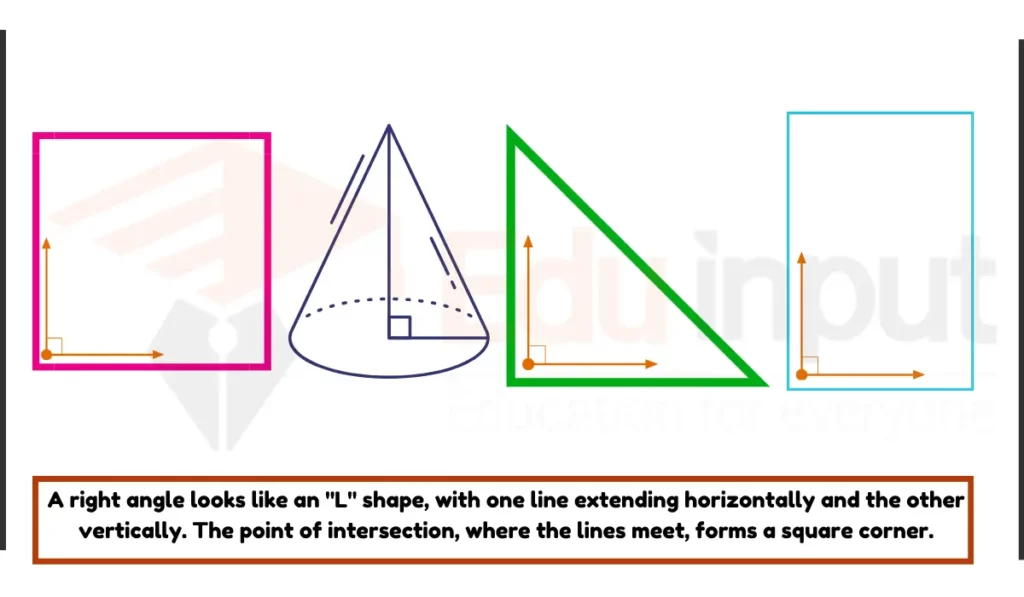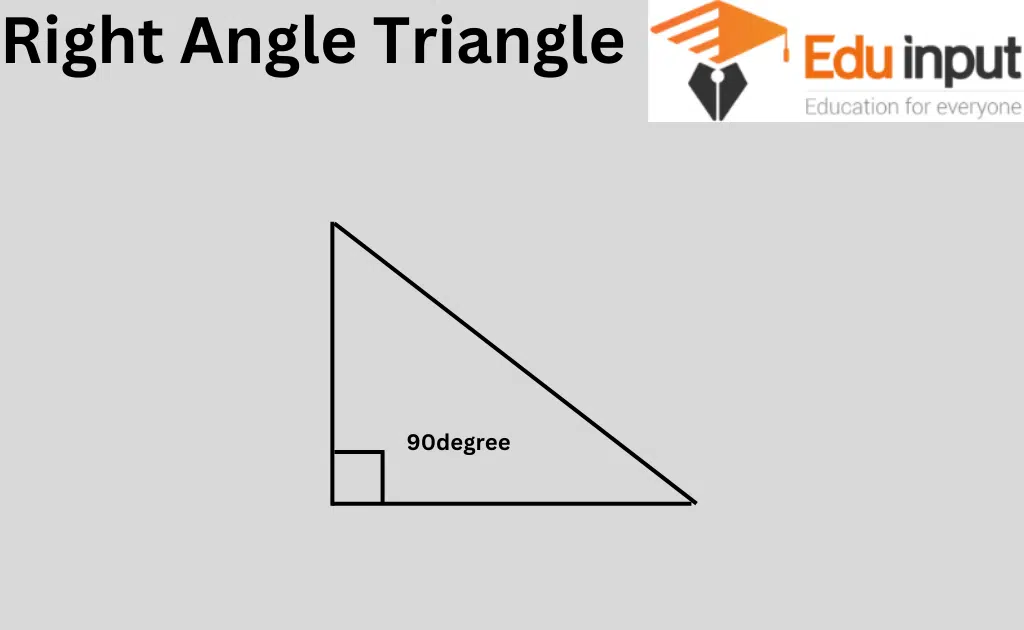Right Angle In Geometry-Definition, Shape, and Examples
In geometry, a right angle is formed when two lines or line segments intersect in such a way that they create two adjacent angles, and one of these angles measures exactly 90 degrees. The most fundamental property of a right angle in geometry is that it measures exactly 90 degrees.
Square, triangle, and right-angle triangles are shapes that create a 90-degree angle.
Read How Many Right Angles Does Each Shape Have?

The sides of a square and rectangle always form a right angle with each other. In radians, it is represented as π/2.
When two lines intersect at a right angle, they meet at a point, and the angle formed between them is 90 degrees.
What is Right Angle?
A right angle is an angle that measures exactly 90 degrees. Right angles are significant in geometry and trigonometry.
Right angles are represented with a square, while other angles are represented with a curved line.
A right angle is an angle that measures exactly 90 degrees, or π/2. Angles that measure less than 90°, such as 87°, 56°, 77°, 42° are acute angles. Angles that measure more than 90°, such as 91°, 98°, 102°, 150°, 167° are obtuse angles.
Properties Of Right Angle
Here are some properties of right angles:
- A right angle measures exactly 90 degrees. This is a quarter turn.
- The two straight sides forming a right angle are perpendicular to (meet at 90 degrees) each other.
- If one arm of the angle rotates, the other arm always stays fixed in place perpendicular to the rotating one.
- A right angle upside down looks identical to a right angle right side up. Rotating it does not change its shape or measurement.
- Two right angles can join perfectly to form a straight 180 degree line segment. Half of a straight line is a 90 degree right angle.
- When a right angle is divided in half, each new angle measures 45 degrees. Four 45 degree angles make up one full 90 degree right angle.
- Every shape with square corners or corners that meet at 90 degrees (rectangles, squares, cubes, etc) by definition contain right angle corners.
- Right angles are stable because the perpendicular sides strongly support each other and resist external forces. This makes structures with right angles stand rigidly.
- The longest line segment that can fit between two sides of a right angle is the hypotenuse which forms the diagonal of a rectangle or side of a square.
Why Right Angle Is Called Right Angle?
A “right angle” is called Right Angle because it forms a square corner, like the corner of a book or a piece of paper. The word “right” here means straight or upright.
When two lines meet to form a right angle, they create a 90-degree angle, making a perfect L-shape. The name “right angle” helps us understand that it’s different from other angles and has a special quality. it’s like the corners we often see around us.
Right Angle Shape
A right angle looks like an “L” shape, with one line extending horizontally and the other vertically. The point of intersection, where the lines meet, forms a square corner.

It creates an angle of precisely 90 degrees between them. This distinctive shape is fundamental in geometry and commonly observed in various objects and structures.
Right Angle In Geometry Examples
Here is a list of 14 real-life things that make right angle:
- corners of walls
- L-shaped sofas
- corners of laptops
- Book Covers
- Edges of Windows
- Edges of Doors
- Computer Screens
- Paper
- City Blocks
- Room Corners
- Chessboard Squares
- Brickwork in Buildings
- Tiled Floors
Have a detailed Overview Here: Real World Examples of Right Angles
Triangle with Right Angle
The right angle is also found in right-angled triangles. A triangle is considered to be right-angled if one of its three angles is equal to 90 degrees. The sum of the three interior angles of any triangle is always 180 degrees. So, if one angle in a triangle is equal to 90 degrees, then the other two angles must add up to 90 degrees.

FAQs
Which Figure Has 24 Right Angles?
A figure with 24 right angles is a rectangular prism. A rectangular prism has six faces, and each face is a rectangle, which means it has four right angles. Therefore, 6 faces multiplied by 4 right angles per face equals a total of 24 right angles in a rectangular prism.
What Is Notation Of A Right Angle In Geometry?
In geometry, the notation for a right angle is often represented by a small square drawn at the angle’s vertex.






Leave a Reply